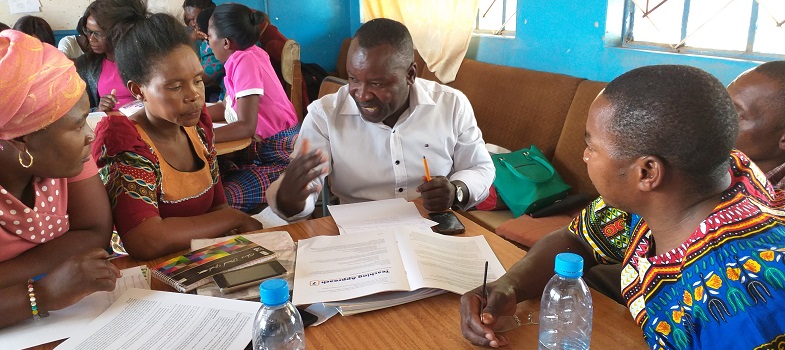Training guide
3. Supporting reading and writing through active teaching and learning
In the course 1 training materials, one of the topics was on using questioning to promote thinking But questioning can also be useful in helping learners with their reading skills. When children are learning to read, asking questions helps them to understand the general characteristics of the text they are reading (e.g. what is the story about?) and the information in the text (e.g. why was the lion sad? what did the zebra say to the lion?). It also helps the teacher to know how successfully learners have been able to read the text. Of course, the purpose of reading is to understand what has been read.
Activity 5.2: Using good questioning skills to help learners with their reading comprehension
This activity can be used at all levels. In early grades, the learners can listen to the teacher read and then answer questions about what happened in the story. With older learners, they can read the text and then write answers to questions. As children learn to read independently, they can also ask and answer questions with each other. Choose a multi-paragraph reading from any subject, or a paragraph with a few sentences for lower grade. In the TGM, read and practise this activity so that you are really prepared in your next lesson. Write two questions per paragraph in your Teacher Notebook – maybe one lower- and one higher-order question, or two higher-order questions. For lower grades, you will need to ask one question at a time.Lower order questions: yes/no answers; can you…?/do you…?/is…?
Higher order questions: What/Why/How/When/How often/Where? Remember that higher-order questions are ones which will require learners to think, and there will not necessarily be one right answer. They also require a longer response. When working with Classes 1 and 2, read aloud a short paragraph and ask the learners to answer a question on what they’ve heard. With older learners, you can write the questions for paragraph one on the board. Give learners two minutes to find the answers and ask them to put their hands in the air when they think they know them. Ask different learners to answer and put their answers on the board. If the answer is wrong, write it up and ask if they all agree so that other learners correct it, not you. Remember the work you did with course 3 resources about the importance of positive feedback and prompting, as well as correcting learners. Now repeat with subsequent paragraphs or sentences. This activity will help learners with their ‘scanning’ skills as they have to quickly look through the paragraph to find the answers. Speed is important so stop them after two or three minutes! If books are not available, learners may need to first copy the paragraphs from the blackboard, so allow time for this. |
